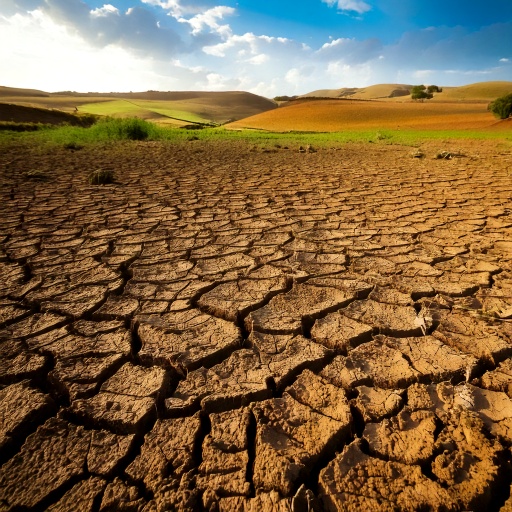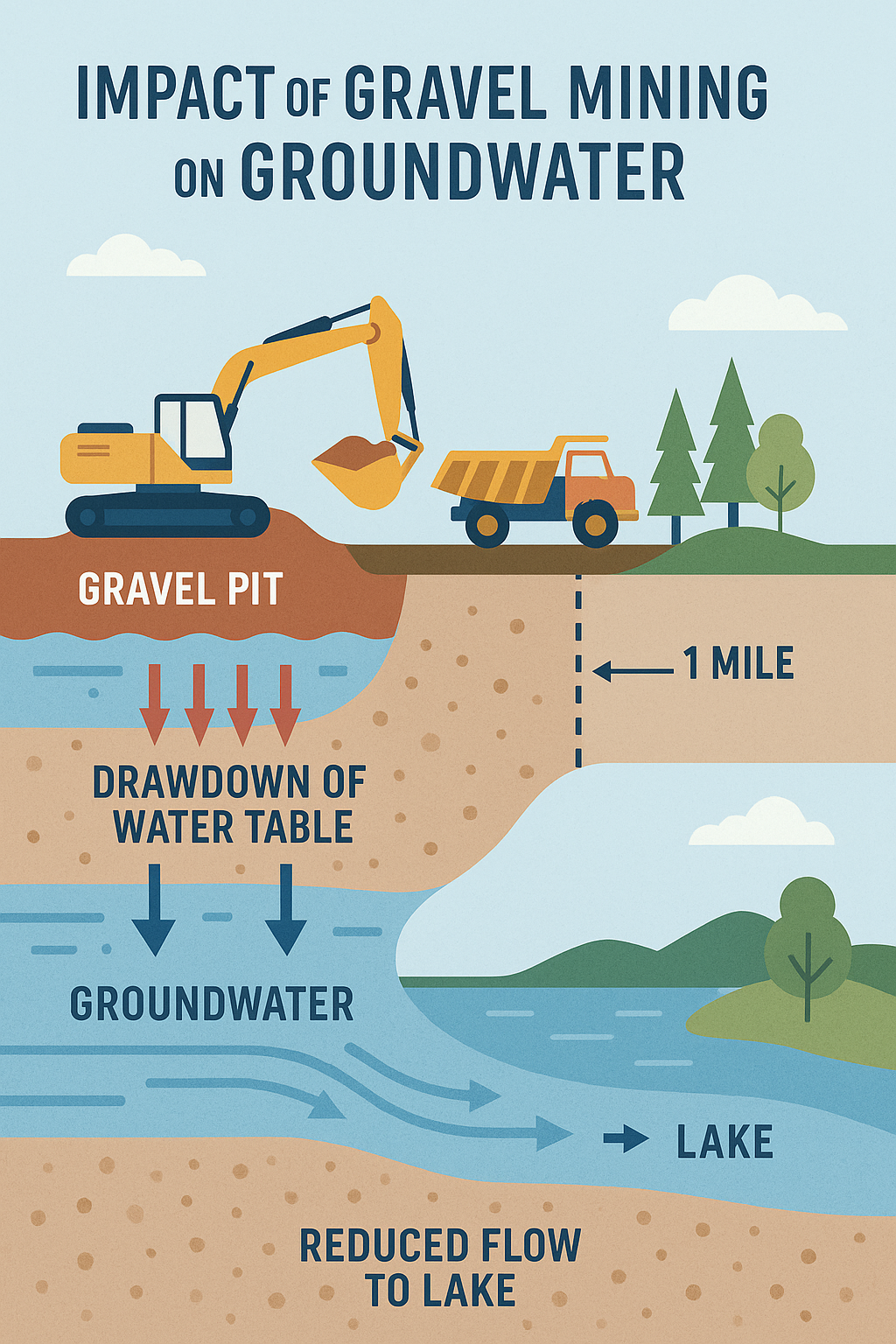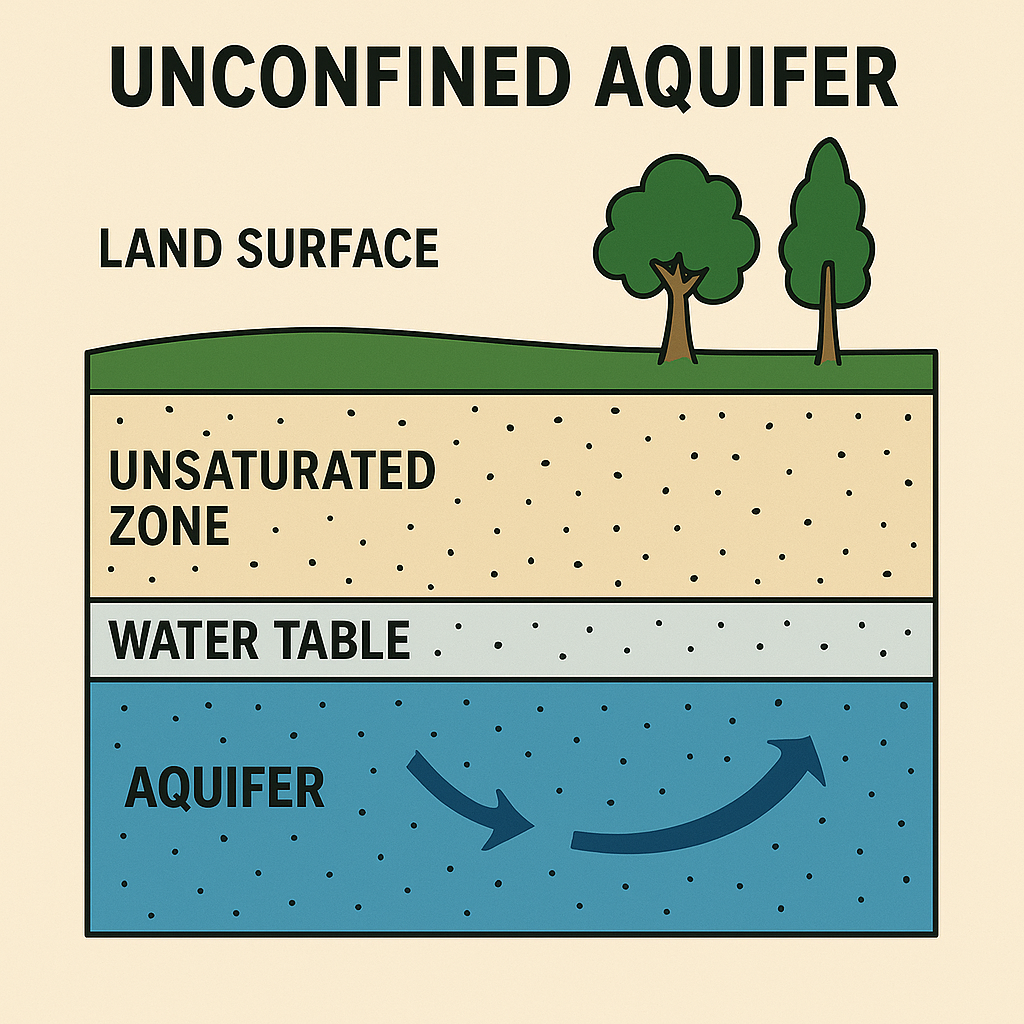Community Alert: The Threat Facing Springfield Township
The beautiful, tranquil environment of Springfield Township is under imminent threat. A group of us residents, along with those in nearby Rose Township, are faced with the potential destruction of our serene living conditions. The Levy Company has proposed a 496-acre gravel pit on Ormond Road, promising at least twenty years of noise, dust, and disruption. Our lives – filled with the quiet and peace that our community provides – will be forever altered by gravel haulers, increased traffic, and the pollutants that come with such projects. This is not just a concern for Springfield residents, but also for those in surrounding areas who will inevitably be affected.
The proposed gravel pit poses serious environmental risks that should concern each and every one of us. Our air quality will degrade, with a constant cloud of dust from the pit suffocating our clean air. Perhaps more concerning is the potential contamination of our groundwater: the very source of our daily hydration and well-being may become polluted, putting our health and the health of future generations at peril. Importantly, the noise from the constant churning of machinery and the consistent coming and going of gravel haulers will not only disrupt our way of life but can also lead to increased stress and related health issues.
According to environmental assessments, gravel pits are notorious for long-term environmental impacts. Studies have shown a decline in biodiversity, changes to the water table, and lasting effects on the land that can persist long after the pit has been exhausted. It’s crucial to weigh these consequences against any temporary economic benefits.
We, the community of Springfield and Rose Township, call upon the local authorities and decision-makers to prioritize the long-term health and wellbeing of our residents and environment over shortsighted economic gains. We urge The Levy Company to reconsider their plans and explore other locations or industries that do not pose such significant harm to our communities.
We need your help to stop this development. By signing this petition, you can send a clear message that the environmental and health impacts are too great a cost for our community. Let’s work together to protect our homes, our environment, and our future.
Community Events
Family Fall Festival
Hosted by: Springfield Township Environment Protectors (S.T.E.P.)
Join us for cider and donuts, burgers and chips! Activities for the kids too.
Why: Let’s gather and unite to protect our great township. We’ll provide updates on our progress and share ideas. We’re all in this together!
When: Saturday, September 27, 1:00 PM – 3:00 PM
Where: Shiawassee Park Pavilion (near Civic Center ballfields)
Bring: Portable chairs
Donation: $10 per family appreciated
Health & Safety
 Silica Dust: A Silent Threat
Silica Dust: A Silent Threat
- Silicosis: An incurable and often fatal lung disease.
- Lung Cancer: Increased risk of developing cancer.
- COPD & Bronchitis: Aggravation of respiratory conditions.
- Kidney Disease: Potential links to renal issues.
- Autoimmune Diseases: Higher susceptibility to conditions like lupus and rheumatoid arthritis.
 Children: Uniquely Vulnerable
Children: Uniquely Vulnerable
- Developing Lungs: More susceptible to damage.
- Higher Breathing Rate: Inhale more pollutants per pound of body weight.
- Outdoor Play: Increased exposure time.
- Long-Term Effects: Early exposure can lead to lifelong health issues.
- Asthma & Allergies: Dust can trigger or worsen symptoms.
Gravel Pit Sounds
What Does a Gravel Pit Sound Like?
Health Risks: The Unseen Threat of Noise
🔊Chronic Noise & Your Health
- Increased Stress: Elevated cortisol levels leading to anxiety.
- Sleep Disturbance: Difficulty falling asleep and poor sleep quality.
- Cardiovascular Issues: Higher risk of hypertension, heart disease, and stroke.
- Tinnitus & Hearing Loss: Permanent damage from prolonged loud sounds.
🧠Impact on Child Development
- Impaired Learning: Difficulty concentrating leads to lower academic performance.
- Speech & Language Delays: Noise interferes with hearing and language processing.
- Cognitive Function: Negatively affects memory and problem-solving.
- Increased Stress & Anxiety: More stress-related behaviors in noisy environments.
Detailed Environmental Devastation
Water Resources Under Threat
- Aquifer Depletion/Contamination: Excavation can puncture aquifers, leading to water loss or contamination.
- Altered Water Table: Changes can dry up wells and wetlands.
- Surface Water Pollution: Sediment runoff increases turbidity, harming aquatic life.

Land Degradation & Biodiversity Loss
- Habitat Fragmentation: Roads and excavation isolate wildlife populations.
- Soil Erosion & Loss: Vegetation removal leads to erosion and sedimentation.
- Irreversible Landscape Changes: Deep pits permanently scar the land.

Gravel Mining Ecosystem Impact

Impacts on Water Tables, Aquifers & Surface Waters
- 1. Excavation Below the Water Table:
- Many gravel pits extend beneath the natural water table, creating artificial lakes or open groundwater exposures.
- This alters the hydraulic gradient, causing groundwater to flow toward the pit—affecting nearby wells, wetlands, and streams.
- 2. Drawdown of Aquifers:
- “Cone of depression” from pits lowers the water table and impacts private/agricultural wells up to a mile away.
- USGS (Baker et al., 2001): Significant drawdowns found, especially in unconfined aquifers.
- 3. Reduced Recharge of Wetlands & Lakes:
- Pits intercept water that would recharge streams, ponds, and wetlands—can dry out surface water up to a mile away.
- Risks higher in interconnected watersheds and glacial moraine regions.
- 4. Contamination Risk:
- Exposes groundwater to surface contaminants: diesel fuel/oil, sediment, heavy metals, and PFAS.
- These pollutants can migrate into aquifers, lakes, ponds, and rivers.
- 5. Case Studies & Supporting Sources:
- Wisconsin DNR (2006): Effects extended beyond 1,200 feet, sometimes 1 mile.
- Ontario Ministry of Environment: Stream drying and wetland shrinkage near mining.
- Michigan EGLE: Cumulative impacts not always captured in permits.
- USGS Bulletin 2220 (2001): Sand and Gravel Mining Effects on Groundwater Recharge
- 6. Long-Term Hydrological Shift:
- Once disrupted, recharge patterns may take decades to stabilize, if ever.
- Pits can permanently alter flow, causing flood risk in some areas and water scarcity in others.
- Private wells: Drawdown can reduce yield or dry up wells.
- Sensitive wetlands/streams: Loss of recharge destabilizes ecosystems.
- Downhill surface waters: Especially risky where groundwater flows laterally.

Additional Scientific Insights & Real-World Evidence
- 1. Cumulative Impacts from Multiple Mines:
- Clusters of pits cause regional aquifer drawdowns, permanent groundwater gradient changes, and long-term wetland drying.
- 2020 University of Minnesota study: Four gravel operations caused flow loss in rivers up to 3.2 km (~2 miles) away. (U of MN Water Resources Center)
- 2. Impact on Coldwater Fisheries:
- Streams/rivers relying on cold groundwater inputs can warm up, reducing oxygen, harming sensitive species, and encouraging algae/invasive species.
- 3. Disruption of Natural Recharge Areas:
- Mining in glacial outwash or sandy moraines alters rainfall/snowmelt infiltration, reducing recharge.
- Can lower baseflow in rivers and streams, drying out wetlands and forest seeps.
- 4. Real-World Legal Examples:
- 2012 Wisconsin Court of Appeals: Upheld denial of a gravel permit due to long-term threats to water supplies.
- EGLE (MI): Impacts can take years to appear, often too late to reverse once noticed.

What is an Unconfined Aquifer?
An unconfined aquifer is a layer of sand, gravel, or soil that holds groundwater close to the surface, with no solid rock or clay layer above it. Water can move freely from rain and snow directly into the aquifer, making it critical for well water—and especially vulnerable to surface contamination and disruption. Hydraulic Connectivity & Rapid Spread:
- Unconfined aquifers (common in Michigan) are directly recharged by precipitation and surface water.
- Mining pits act as drains, pulling water away from wells, springs, and even distant streams/wetlands.
-
Most rural wells in Michigan draw from unconfined aquifers beneath fields, forests, and neighborhoods.
(EGLE Groundwater Basics) -
When gravel mining cuts into these layers, it can lower the water table for wells, wetlands, and streams up to a mile away.
(USGS Bulletin 2220) -
Unconfined aquifers are critical for safe drinking water and local ecosystems, but are especially susceptible to contamination.
(USGS Aquifer Basics) -
Scientific studies show gravel mining can impact groundwater, streams, and wetlands even 1–2 miles from the mine.
(University of Minnesota Water Resources Center)
Take Action
Legislative Action Summary
Michigan lawmakers are advancing bills that would eliminate local control over gravel mining, centralizing permitting under the state (EGLE). The main bill, HB 4526, proposes criminal penalties for false statements in mine applications. In 2021, SB 431 passed the Senate but failed in the House after strong opposition from environmental and municipal groups.